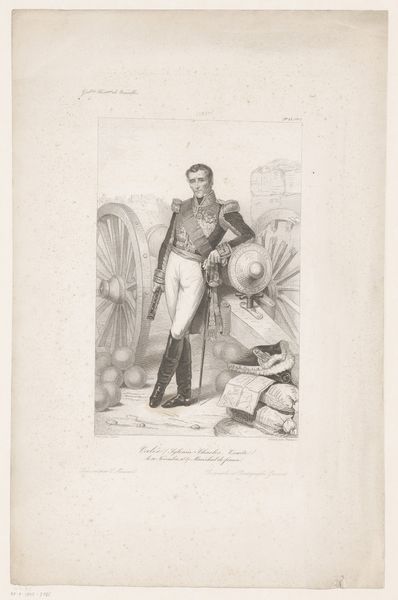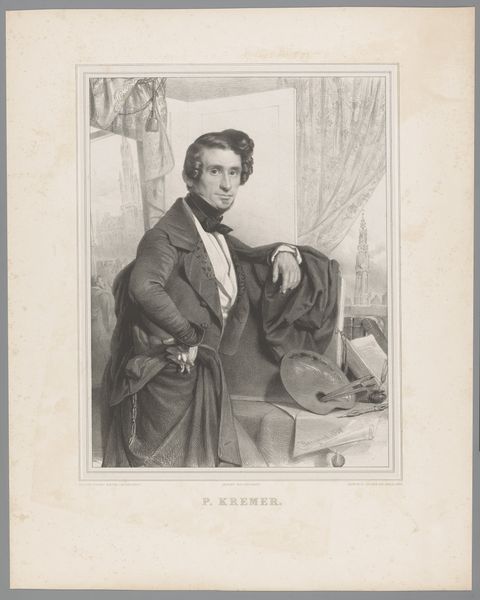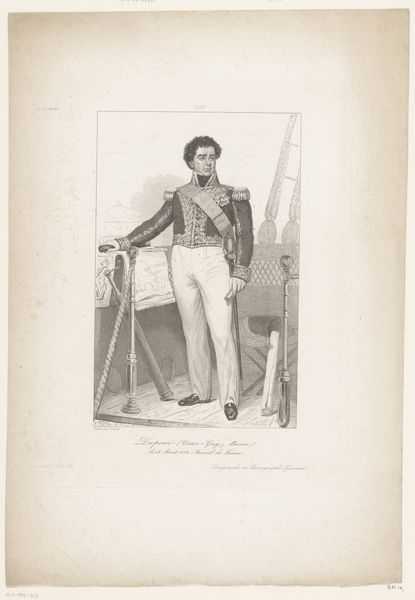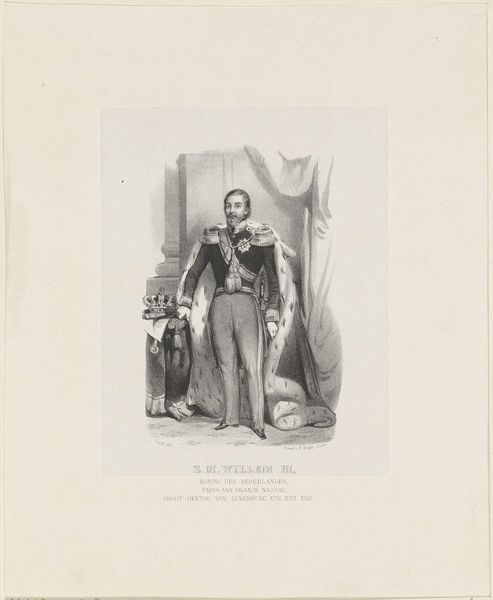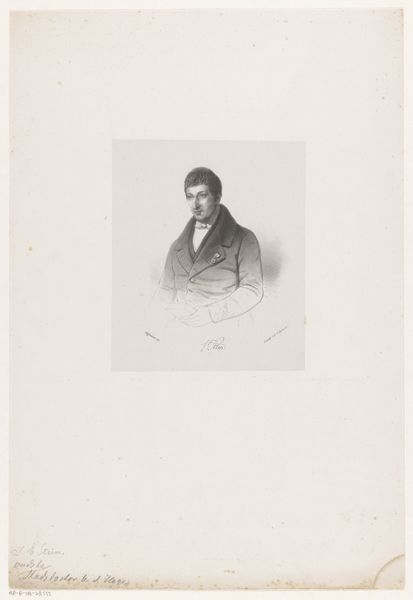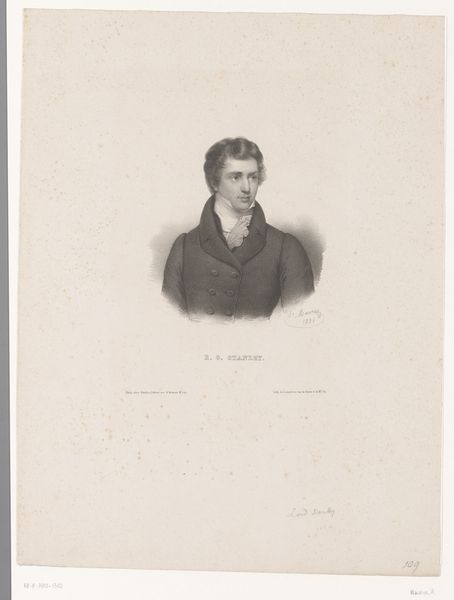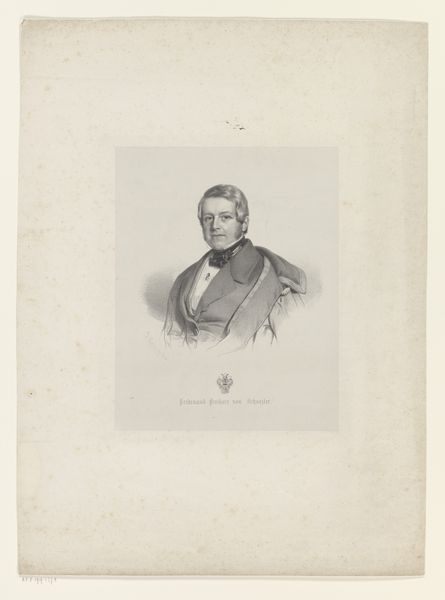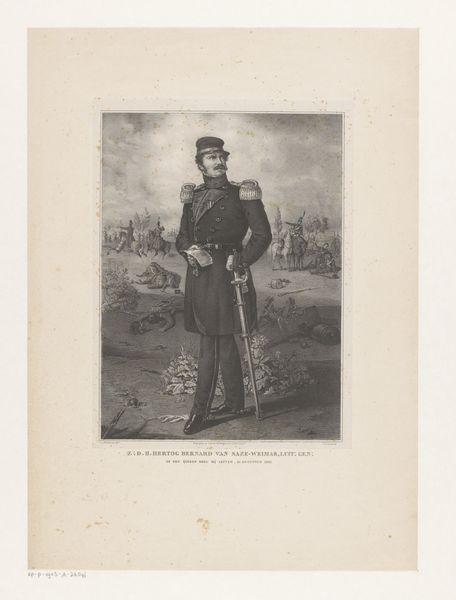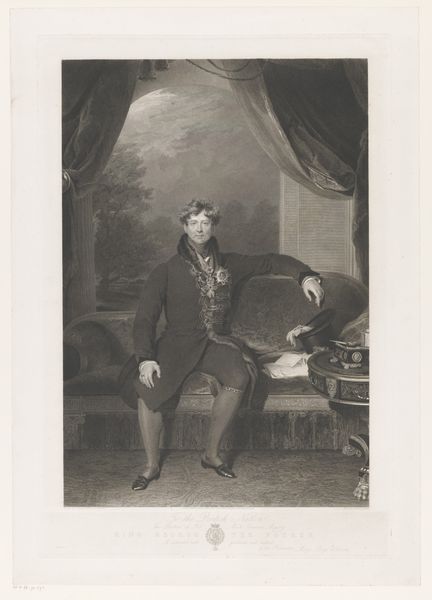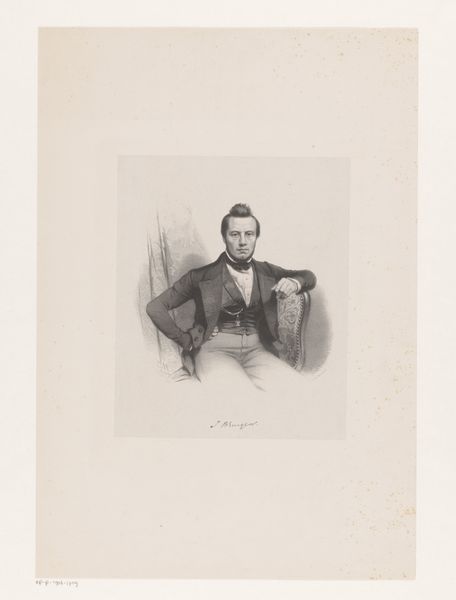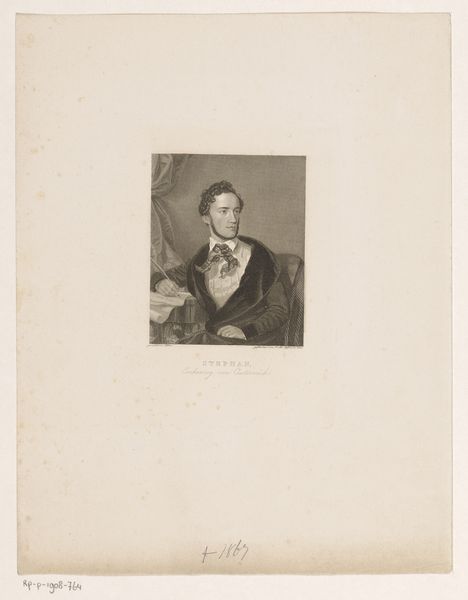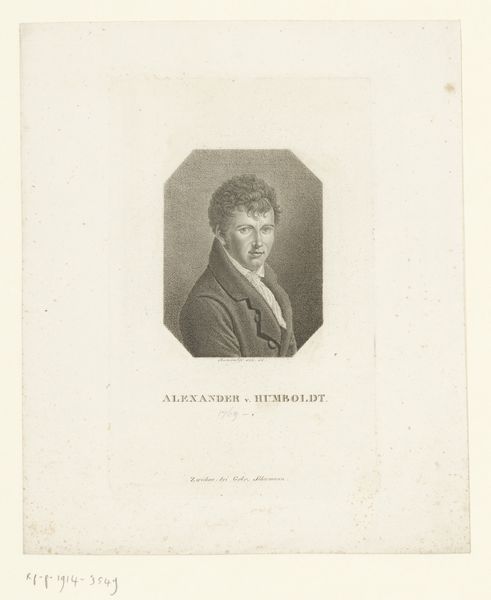
drawing, pencil
#
portrait
#
drawing
#
neoclacissism
#
pencil drawing
#
pencil
#
realism
Dimensions: height 276 mm, width 235 mm
Copyright: Rijks Museum: Open Domain
Curator: Here we have Amédée Félix Barthélémy Geille's portrait of Laurent Jean François Truguet, rendered in pencil sometime between 1838 and 1841. My eye is immediately drawn to the subject's erect posture. Editor: Absolutely, there’s an air of self-importance. I see a man framed not just by neoclassical architecture, but by his military uniform – suggesting a complex relationship to power and service during a turbulent time in French history. I think of Foucault! Curator: Indeed. Look closer. The classical column, the globe, the ship on the horizon—they speak to themes of exploration and enlightenment. It is an intentional invocation of authority that visually connects him with empires, navigation, and established governance. Editor: And what of the figure's somewhat stiff pose? His hand rests almost too casually on his cane, creating a visual tension that undermines the portrait’s intended effect, doesn't it? The artist tries to imbue the subject with dignity, but perhaps reveals anxiety around that very idea in the aftermath of revolution. The pencil as medium—suggests transition as well. Curator: Fascinating. I would say his uniform also carries weight—it serves as an external symbol representing rank and accomplishments, as the symbols he chose for his background do. They invoke very specific values and reinforce this man's identity for posterity. Editor: Perhaps. I read something subtly different in this carefully composed image. Post-revolution France was busy crafting new myths—of itself, of its leaders. This portrait participates in constructing that very fragile narrative in a Europe rife with political instability and ideological tension. I see it as a statement, not a stable symbol. Curator: A thought-provoking perspective. These layers of intention—visible or veiled—add richness to an otherwise seemingly simple depiction. It shows us how symbols and art can shape and be shaped by, shifting currents of change. Editor: Exactly. To view this piece is to see visual culture as a battleground for defining power. It makes us consider which images succeeded, which failed and what of the real figure? Food for thought.
Comments
No comments
Be the first to comment and join the conversation on the ultimate creative platform.
